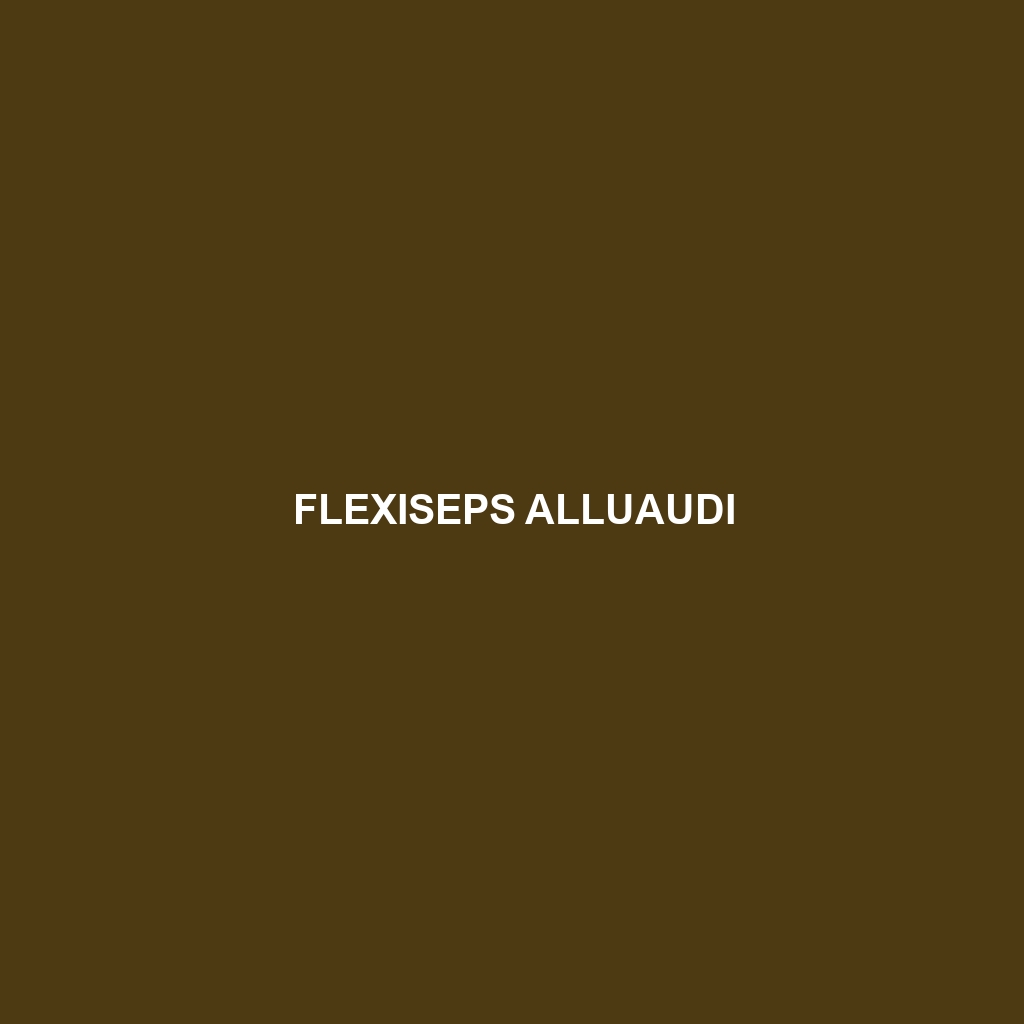Common Name
Flexiseps alluaudi
Scientific Name
Flexiseps alluaudi
Habitat
Flexiseps alluaudi, commonly referred to as Alluaud’s Skink, is predominantly found in the humid rainforests and scrub forests of Madagascar. These habitats offer a unique combination of geographic and climatic diversity, where the average temperature ranges from 20°C to 30°C. The species thrives under moist conditions, frequently inhabiting damp leaf litter and decaying vegetation, which provides crucial cover and sustenance. A vital component of its ecosystem, Flexiseps alluaudi contributes to the rich biodiversity present in Madagascar’s coastal lowlands and temperate forests, where it coexists with a plethora of endemic species. Rainforests, savannas, and the occasional marine habitats along Madagascar’s coastline are critical to the species’ survival.
Physical Characteristics
The Flexiseps alluaudi typically measures between 10 to 15 centimeters in length and exhibits a slender, elongated body that is characteristic of the skink family. Its coloration ranges from a vibrant green to light brown, often adorned with faint stripes or spots that assist in camouflage against the forest floor. Notably, its smooth scales and slightly forked tongue are adaptations that facilitate life within humid environments, enabling it to blend seamlessly into its surroundings. One distinguishing feature of Flexiseps alluaudi is its short limbs, which are more reduced than those of other skink species, giving it a distinctly limbless appearance, often leading to confusion about its classification.
Behavior
Flexiseps alluaudi displays predominantly nocturnal behavior, which aids in avoiding predators during daylight hours. This skink is known for its solitary nature, though it can occasionally be found in loose groups during the breeding season. Social interactions tend to be minimal outside of mating rituals, which are characterized by elaborate courtship displays. During mating, the male engages in a series of visual signals and territorial displays to attract females. Its sedentary lifestyle includes burrowing and hiding under leaf litter to conserve moisture and evade predators, making it fascinating for researchers interested in behavioral ecology.
Diet
As an insectivore, Flexiseps alluaudi primarily feeds on soft-bodied invertebrates, including various insect species such as ants, beetles, and larvae. Its diet is crucial for controlling insect populations within its habitat. Observations suggest that it exhibits opportunistic feeding patterns, meaning it will consume available prey items based on their abundance. The skink employs a foraging strategy that involves searching among leaf litter and under rocks, using its keen sense of smell to locate food. Its specialized adaptations for hunting include an elongated physique, allowing it to maneuver swiftly through dense vegetation.
Reproduction
The reproductive cycle of Flexiseps alluaudi is marked by seasonal changes in behavior coinciding with Madagascar’s rainy season. Mating typically occurs in late spring, with females laying clutches of 2 to 4 eggs. These eggs are concealed in moist substrates to protect them from environmental threats and predators. The incubation period lasts about 6 to 8 weeks before hatchlings emerge, measuring approximately 5 centimeters in length. Parental care is minimal, as the female does not exhibit any protective behaviors post-oviposition. This reproductive strategy highlights the species’ reliance on environmental conditions for the survival of offspring.
Conservation Status
According to the IUCN Red List, Flexiseps alluaudi is classified as a species of “Least Concern”. However, habitat destruction due to deforestation and agricultural expansion in Madagascar poses significant threats to its population. Conservation efforts are essential to monitor the species and mitigate habitat loss. Organizations focused on the protection of Madagascar’s unique biodiversity are working to preserve the ecosystems in which Flexiseps alluaudi thrives, ensuring its survival amidst growing environmental challenges.
Interesting Facts
One of the most intriguing aspects of Flexiseps alluaudi is its unique adaptation of limblessness, which distinguishes it from many other members of the skink family. This adaptation enables it to navigate through dense forest floor debris effectively. Additionally, the species is known for its ability to regenerate its tail if lost, a fascinating survival mechanism that allows for quick escapes from predators.
Role in Ecosystem
Flexiseps alluaudi plays a crucial role in its ecosystem by contributing to the regulation of insect populations, aiding in maintaining ecological balance. As an insectivore, it serves as both predator and prey, supporting the food web in Madagascar’s diverse environments. Furthermore, its habitat preferences contribute to soil aeration and nutrient cycling through its burrowing behavior, emphasizing its importance as a keystone species in its native ecosystems.
